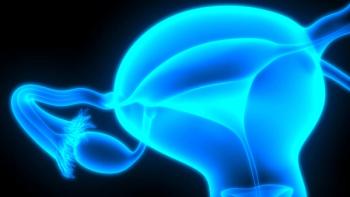
- ONCOLOGY Vol 13 No 7
- Volume 13
- Issue 7
Moderate-Dose External Radiation Plus Implants Increase Survival in Cervical Cancer
Standard radiation therapy for patients with latestage cervical cancer (stage IIIB) should be adjusted so that each patient receives moderate doses of external-beam radiation therapy plus radioactive implants, according to a study led by Dr. Mark
Standard radiation therapy for patients with latestage cervical cancer (stage IIIB) should be adjusted so that each patient receives moderate doses of external-beam radiation therapy plus radioactive implants, according to a study led by Dr. Mark D. Logsdon, now at the Radiological Association of Sacramento, California. For the large, single-institution study, Dr. Logsdon and his team of investigators reviewed the records of more than 1,000 patients treated between 1960 and 1993 at M. D. Anderson Cancer Center in Houston, Texas.
The study found that patients who received both types of radiation treatment had a survival rate nearly double that of patients who were treated with high doses of external-beam radiation therapy alone, said Dr. Logsdon, md. In addition, the study showed that higher doses of external-beam radiation treatment are not really better. Patients treated with moderate doses of external-beam radiation therapy (34 to 47 Gy) plus radioactive implants had a survival rate of 53% at 5 years, compared to a rate of about 30% for patients treated with higher doses of external-beam radiation therapy and lower implant doses.
Moderate Doses Lessen Complications
The risk of complications was also much lower with moderate doses of external-beam radiation. The incidence of severe complications almost tripled as the external-beam dose increased, said Dr. Logsdon.
Conventional thinking has been that increased doses of external-beam therapy were necessary to cure such advanced disease. In fact, patients derived a double benefitincreased cure rates and better long-term quality of lifewhen more moderate doses of external treatment were combined with higher implant doses, he said.
The study results, say the investigators, provide convincing evidence that optimal radiation therapy for cervical cancer must include both moderate doses of external-beam treatment plus radioactive implants. (Recently announced studies indicate that the survival rate may be improved even further by adding chemotherapy.)
The study was published in the March 1999 issue of the International Journal of Radiation Oncology Biology and Physics.
Articles in this issue
over 26 years ago
Discussing Disease Progression and End-of-Life Decisionsover 26 years ago
New Genetic Mechanism Associated With Thyroid-Related Diseasesover 26 years ago
Beyond 5-Fluorouracilover 26 years ago
Nonsurgical Therapy Holds Promise for Basal Cell Carcinomaover 26 years ago
Photodynamic Therapy Effective for Swallowing Problemsover 26 years ago
Novel Gene Therapy to Clear Blood Clots in Leg Arteriesover 26 years ago
Bills Would Require Private Insurers to Pay for Cancer ScreeningNewsletter
Stay up to date on recent advances in the multidisciplinary approach to cancer.

















































































